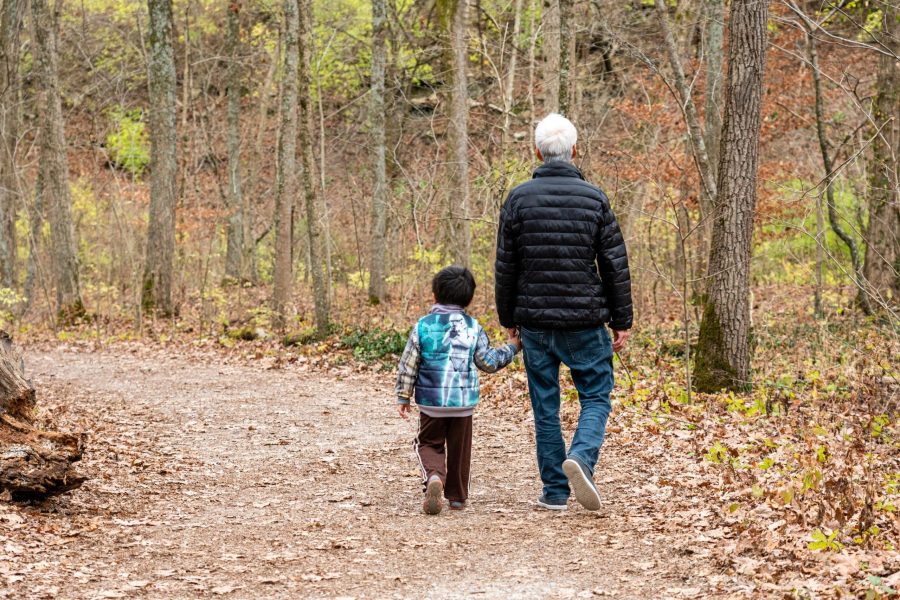Get Outside: How To Hike Comfortably & Safely in the Cold

Don’t let cold temperatures keep you inside! We’ve gathered tips from our adventure experts to help you plan your next winter hike.
Before Heading Out: Plan Ahead and Prepare
- Check the forecast
- Visit the landowner’s website or call to check trail conditions. If you plan to visit a Great Park, check Park Alerts & Closures before you head out.
- Check in with those you’re hiking with about skill/ability level and health concerns
- Have a plan B/exit route(s)
- Leave your travel plans with a trusted family member or friend
What to Bring
Your Ten Essentials System. Originally devised in the 1930s by the Seattle-based organization for outdoor adventurers, The Mountaineers, the Ten Essentials was intended for hiking, backpacking and mountaineering. It elaborates on the classic list by providing more details and suggestions, and accounts for varying hiking styles, weather conditions and terrains. An essentials kit is useful for any pursuit in the outdoors and is perfect for keeping at home or in the car for emergencies like winter storms.
Your Ten Essentials will evolve depending on your adventures.
- Navigation: Map, compass, altimeter, GPS
- Sun Protection: Sunglasses, sunscreen, hat
- Insulation: Hat, gloves, jacket
- Illumination: Headlamp or flashlight and extra batteries
- First-Aid Supplies: Adhesive bandages, antiseptic wipes, gauze pads. We highly recommend always including insect repellent when in the great outdoors!
- Fire: Lighter, matches, firestarter in a waterproof container
- Repair Kit: Knife, multitool, duct tape, rope
- Nutrition: Enough extra food for one day
- Hydration: Water purification, extra water container, electrolyte replacement
- Shelter: Tarp, bivouac sack, emergency blanket, poncho
What to Wear
Layer up (base, mid-layer, and outer). Even if you don’t wear all three layers at the outset, it’s a good idea to take all layers on every outing. You can peel off layers if things heat up, but you can’t put on layers that you didn’t bring along.
- Base: Wicks sweat off your skin
- Mid: Retains body heat to protect you from the cold
- Outer: Shields you from the wind and rain
Cold-weather layer examples: Mid-weight polyester long underwear top and bottom; a jacket with synthetic insulation; mid-weight fleece pants; waterproof/breathable rain jacket and pants.
Food!
Pack plenty of snacks and water. You burn 34% more calories when hiking in temperatures 15–23 degrees Fahrenheit.
Want to learn more? Have a listen to our podcast! Take It Outdoors Episode 10: Winter is Upon Us
—
Allison Cone
Adventure Outpost Coordinator
